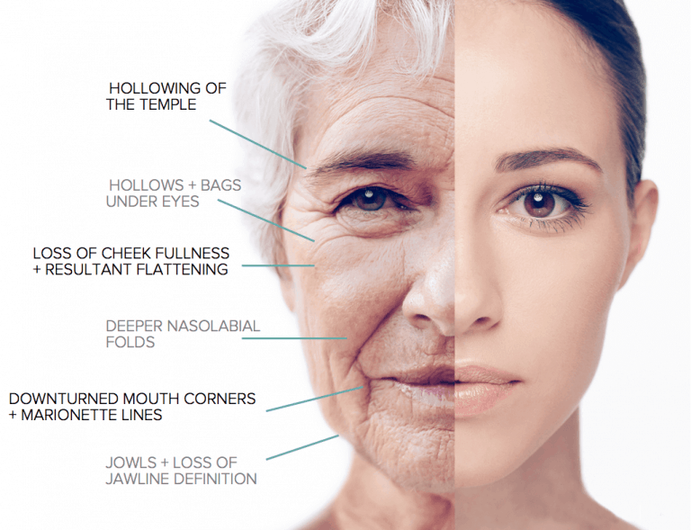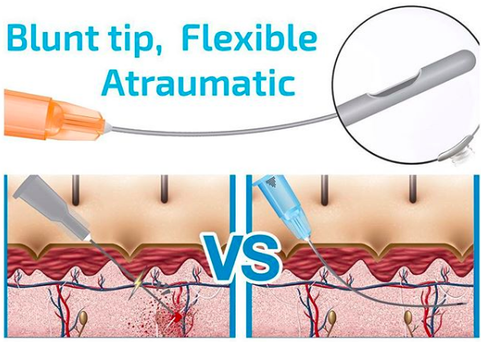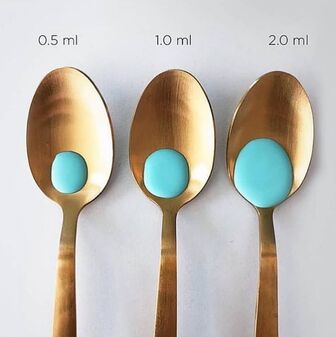The secret to the hydrating gel that is restoring youth everywhere
Beauty of Remaining Timeless
The closest thing to maintaining and restoring youth is NOT vitamin C, it's dermal fillers.
As we age, our skin, fat-pads, muscles and bone structure change with us, forming lines/wrinkles.
This is a sign of aging.
However, some of us don't seem to age!
Some appear like they found the fountain of youth and show no sign of aging.
The volume on their face remains unchanged... Timeless.
More mind-boggling is that some actually look better and better over time!
A good example would be our lovely star J.Lo
As we age, our skin, fat-pads, muscles and bone structure change with us, forming lines/wrinkles.
This is a sign of aging.
However, some of us don't seem to age!
Some appear like they found the fountain of youth and show no sign of aging.
The volume on their face remains unchanged... Timeless.
More mind-boggling is that some actually look better and better over time!
A good example would be our lovely star J.Lo
The picture on the left was when she was in her 20's. The picture on the right is her at 50 years old!
J.Lo is a perfect example of someone who is able to maintain a youthful look.
How she gets herself to look so good at 50 (along with all the other people on the same boat) is likely more than just a good face cream and good genes.
The perfect volume that was never lost and the wrinkles that were never formed on her face are her secrets.
However, we can openly share our secrets with you.
-
The only safe and effective way to restore volume
and maintain your youthful look
without surgery or long down time
is
Dermal Fillers.
J.Lo is a perfect example of someone who is able to maintain a youthful look.
How she gets herself to look so good at 50 (along with all the other people on the same boat) is likely more than just a good face cream and good genes.
The perfect volume that was never lost and the wrinkles that were never formed on her face are her secrets.
However, we can openly share our secrets with you.
-
The only safe and effective way to restore volume
and maintain your youthful look
without surgery or long down time
is
Dermal Fillers.

Table of valuable content
To start off, give yourself a round of applause for being here and doing homework without being forced to do so. Rarely does anyone ever read before signing the dotted lines anymore. It is important for clients to be fully informed on what dermal fillers are before committing to a treatment.
Below we will discuss:
- What are dermal fillers?
- Are dermal fillers safe?
- Who should not get dermal fillers
- What areas can dermal fillers treat?
- What to expect on the day of?
- Dermal filler side effects
- Dermal filler costs
Dermal Fillers Injection
Dermal fillers are injection based gel-like substance that helps to restore volume back into the face . There are multiple types of dermal filler products that are separated based on its chemical make up, longevity, and how it interacts with our body. These include hyaluronic acid (ex Juvederm, Resylane), polymethyl-methacrylate –PMMA (ex. Bellafill), calcium hydroxylapatite (Radiesse), and polylactic acid (Sculptra). Some last up to 12 months and others are semi-permanent. Regarding being the most popular kind of dermal filler with the highest safety among all other fillers, hyaluronic acid is the go-to product. For the purpose of this article, only hyaluronic acid will be discussed when dermal fillers are mentioned.
Hyaluronic acid is a natural occurring substance that is found all over our body from our skin tissues to the fluid in our eyes and joints. Because of this, allergic reactions are very uncommon and no allergy testing is required before use. Once injected, hyaluronic acid acts quickly to restore volume to the area of injection, increasing skin elasticity and smoothing out deep wrinkles and folds. Hyaluronic acid is extremely hydrophilic, meaning that it has the ability to draw in a lot of water, which helps to add volume to the depleted areas in a more natural way as compared to permanent implants.
Dermal fillers are injection based gel-like substance that helps to restore volume back into the face . There are multiple types of dermal filler products that are separated based on its chemical make up, longevity, and how it interacts with our body. These include hyaluronic acid (ex Juvederm, Resylane), polymethyl-methacrylate –PMMA (ex. Bellafill), calcium hydroxylapatite (Radiesse), and polylactic acid (Sculptra). Some last up to 12 months and others are semi-permanent. Regarding being the most popular kind of dermal filler with the highest safety among all other fillers, hyaluronic acid is the go-to product. For the purpose of this article, only hyaluronic acid will be discussed when dermal fillers are mentioned.
Hyaluronic acid is a natural occurring substance that is found all over our body from our skin tissues to the fluid in our eyes and joints. Because of this, allergic reactions are very uncommon and no allergy testing is required before use. Once injected, hyaluronic acid acts quickly to restore volume to the area of injection, increasing skin elasticity and smoothing out deep wrinkles and folds. Hyaluronic acid is extremely hydrophilic, meaning that it has the ability to draw in a lot of water, which helps to add volume to the depleted areas in a more natural way as compared to permanent implants.

What Areas Can Be Treated
Photo Credit: RichmanHill Clinic
- Temple hollowing
- Under eye hollowing/Tear troughs
- Volume loss at cheeks
- Nasolabial folds
- Volume loss at lips/Thin Lips
- Downturn of the mouth/Marionette lines
- Volume loss of jawline
- Protruding fat at jawline/Prejowls sulcus
- Receded chin
Photo Credit: RichmanHill Clinic
What to Expect
Before going in for a visit
On the day of
After the Injection
-Continue arnica tablets for the next 3 days.
-Stay hydrated.
-Avoid massaging or applying any pressure to the treated areas for the next 24-48 hrs.
-Avoid extreme temperatures like heat (sauna) or cold (skiing).
-Avoid any skin care treatments (microdermabrasion, chemical peels, facials etc.) for one week.
-Avoid extended UV exposure or direct sunlight until the redness/swelling subsides and sites are healed (use sunscreen that is SPF 30 or higher).
-Laser (There is limited data on effects of laser treatment on filler treated areas).
Contact the office with any questions or concerns after the procedure.
Before going in for a visit
- Do your homework. Select a creditable injector with proper education, training, and certification. This may take time but will be worth it. Picking someone who is experienced with great outcomes should always trump pricing.
- Make an appointment first. That way the provider knows that you are coming and will block out enough time for you. This is especially important if it is your first time. Discuss what you want to achieve with the treatment. Don't be shy to ask any questions or relay any concerns you may have; skin aging, types of fillers, FDA approved fillers, longevity, techniques, pain, recovery, cost, etc. This time is yours to collect all the important information before making the decision.
- Plan ahead and do not feel pressured to do the procedure on the same day as the consultation. If you feel rushed and pressured, stick with your gut and leave.
- Make sure there are no big events in the next coming week (in case there is any bruising or swelling).
- If you are prone to getting cold sores, let the practitioner know ahead of time so they can treat you for it ahead of time to prevent another breakout.
- Stay away from these for the next week (if you can): NSAIDs (such as aspirin, motrin, advil, naproxen etc), fish oil, vitamin E, John's Wort, ginseng, ginger, ginkgo biloba.
- Avoid drinking alcohol 2-3 days prior to the procedure.
- Take arnica supplements 3 days prior to the procedure.
- Lastly, BREATHE, and pat yourself on the back for stepping out of your comfort zone.
On the day of
- Wash your face with water and soap before leaving the house.
-It is best to arrive without any make up on, however if that is not an option, you can take it off at the office. - Arrive at the appointment 5 minutes early to enjoy their free coffee.
- A medical personnel will go through your medical history to make sure that you are medically cleared (if not done so at the consultation). Because this is a medical procedure, it is important to get a good medical history. There will be consent forms that you will have review and sign.
- PICTURE TIME: before images will be taken (only for your eyes and your practitioner's).
- Your face will be cleansed with chlohexidine and alcohol wipes to make sure the face is free of bacteria before the injection.
- Lean back, listen to the background music, BREATHE and know that you are in good hands.
After the Injection
- You will see immediate improvement (depending on the amount of fillers used)!
- You may see small bruises from the injection site which usually resolves the following days (within 2 weeks).
- Some Do's:
-Continue arnica tablets for the next 3 days.
-Stay hydrated.
- Some Don'ts:
-Avoid massaging or applying any pressure to the treated areas for the next 24-48 hrs.
-Avoid extreme temperatures like heat (sauna) or cold (skiing).
-Avoid any skin care treatments (microdermabrasion, chemical peels, facials etc.) for one week.
-Avoid extended UV exposure or direct sunlight until the redness/swelling subsides and sites are healed (use sunscreen that is SPF 30 or higher).
-Laser (There is limited data on effects of laser treatment on filler treated areas).
Contact the office with any questions or concerns after the procedure.

Are Dermal Fillers Safe?
Dermal fillers are generally safe. However, to fully understand safety with dermal fillers, we must look at the product and the practitioner.
The first Hyaluronic Acid that was approved by the FDA in 2003 was Restylane followed by Juvederm in 2006 for mid to deep dermis injection for correction of moderate to severe wrinkles or folds. Ever since its approval, hyaluronic acid has become one of the most popular products for facial restoration world wide.
In regards to the practitioner delivering the dermal fillers, safety is almost comparable to flying on an airplane.
If your pilot has been flying for a while, knows how to operate the type of plane he is flying, knows his route, has a history of getting to his destinations safely, and able to recognize and address any problems that arise, then you can pretty much sit back, relax, and be assured you'll get to your destination without much concern.
Similarly, if an injector has been doing the same procedures for a while, confident about the different types of fillers and its different indications, is an expert at anatomy, knows where the fillers will be placed, has gotten good outcomes in the past, and able to recognize and address complications as they arise, then you can too, sit back and enjoy the experience.
Knowledge based on using a microcannula (a blunt needle) versus using a sharp needle to deliver the fillers is also a big factor in increasing safety measures. A microcannula has the ability to glide through tissues and push aside vital blood vessels to avoid cutting though them (which can result in significant bruising and vascular occlusion). A needle is precise but will cut through everything in its path.
All analogies aside, dermal fillers are relatively safe when delivered in the hands of an experienced, medically trained, and licensed practitioner.
Dermal fillers are generally safe. However, to fully understand safety with dermal fillers, we must look at the product and the practitioner.
The first Hyaluronic Acid that was approved by the FDA in 2003 was Restylane followed by Juvederm in 2006 for mid to deep dermis injection for correction of moderate to severe wrinkles or folds. Ever since its approval, hyaluronic acid has become one of the most popular products for facial restoration world wide.
In regards to the practitioner delivering the dermal fillers, safety is almost comparable to flying on an airplane.
If your pilot has been flying for a while, knows how to operate the type of plane he is flying, knows his route, has a history of getting to his destinations safely, and able to recognize and address any problems that arise, then you can pretty much sit back, relax, and be assured you'll get to your destination without much concern.
Similarly, if an injector has been doing the same procedures for a while, confident about the different types of fillers and its different indications, is an expert at anatomy, knows where the fillers will be placed, has gotten good outcomes in the past, and able to recognize and address complications as they arise, then you can too, sit back and enjoy the experience.
Knowledge based on using a microcannula (a blunt needle) versus using a sharp needle to deliver the fillers is also a big factor in increasing safety measures. A microcannula has the ability to glide through tissues and push aside vital blood vessels to avoid cutting though them (which can result in significant bruising and vascular occlusion). A needle is precise but will cut through everything in its path.
All analogies aside, dermal fillers are relatively safe when delivered in the hands of an experienced, medically trained, and licensed practitioner.
Side Effects
Although hyaluronic acid is a natural occurring substance that can be found in the body, getting the product from the syringe to the needed area is usually what causes side effects rather than the medication/gel itself. There are thousands of dermal filler procedures being done everyday and despite the risk profile being quite low, the chances of developing these side effects are possible based on the practitioner's experience and the types of needle used as mentioned above.
No medicine is free of side effects, however it is important to note just because it's listed does not mean it will happen.
From the FDA that governs which drug is safe and are able to be used in the US, the list of side effects are as follows
Most common side effects:
Less common side effects:
Rare but serious side effects:
Based on the list, you can see why basement and home injectors are frowned upon. Whether it is a common, less common and rare side effect, it is important to go to an experienced, medically trained, and licensed practitioner in a medical office who knows the steps to take to avoid it from developing or treat it if it arises.
Although hyaluronic acid is a natural occurring substance that can be found in the body, getting the product from the syringe to the needed area is usually what causes side effects rather than the medication/gel itself. There are thousands of dermal filler procedures being done everyday and despite the risk profile being quite low, the chances of developing these side effects are possible based on the practitioner's experience and the types of needle used as mentioned above.
No medicine is free of side effects, however it is important to note just because it's listed does not mean it will happen.
From the FDA that governs which drug is safe and are able to be used in the US, the list of side effects are as follows
Most common side effects:
- bruising
- redness
- swelling
- pain
- itching
Less common side effects:
- infections
- lumps and bumps
- discoloration or change in pigmentation
Rare but serious side effects:
- scarring, blurred vision, partial vision loss, and blindness if the dermal filler is inadvertently injected into a blood vessel. It is recommended that health care providers take care to avoid injection into blood vessels (especially around the forehead, nose and eyes) for these reasons.
- an allergic reaction that may lead to a severe reaction (anaphylactic shock) that requires emergency medical help.
Based on the list, you can see why basement and home injectors are frowned upon. Whether it is a common, less common and rare side effect, it is important to go to an experienced, medically trained, and licensed practitioner in a medical office who knows the steps to take to avoid it from developing or treat it if it arises.
Frequently Pondered
Who should not get dermal fillers (hyaluronic acid)?
Will my face look overdone after dermal fillers?
Will one syringe of filler be enough?
Who should not get dermal fillers (hyaluronic acid)?
- Clients who have a hypersensitivity (such as anaphylaxis or severe allergies) to hyaluronate or any components of the formulation in the filler.
- Pregnancy/Breastfeeding and dermal fillers have not been studied so safety has not been established. It is unknown if the content in the filler crosses the placenta or to breast milk; therefore clients and providers should be very cautious if considering. Err on the side of caution and don't get fillers during pregnancy or while breastfeeding.
- Any active infections should be treated first before getting dermal fillers.
Will my face look overdone after dermal fillers?
- This question is very injector dependent. This look can only be achieved by inexperienced injectors who have strayed too far from the natural look and using way too much product all at once. Find an injector that takes their time to initially map out your face, make a conservative plan, and go slow. The look after the injection should be subtle and refreshed rather than overdone.
Will one syringe of filler be enough?
- One syringe may be enough for adding volume to the lips but may not be enough to do a full face restoration. The amount of filler in a syringe is 1ml. Here is a visual of what 1ml of filler looks like:
How long do dermal fillers last?
How far in advance should I get dermal fillers before a big event?
Are dermal fillers expensive?
- Depending on the type of filler, the brand and the treated area, Dermal fillers can last between 12 months or all the way up to 2 years.
How far in advance should I get dermal fillers before a big event?
- Plan to meet the practitioner 2 to 3 months in advance to discuss treatment options to avoid side effects such as bruising or swelling and to receive the maximum effect of the product by the time your big day comes.
Are dermal fillers expensive?
- Unfortunately, yes. To be able to find a product that is similar to what your body makes is not cheap. There are many fake products on the market so if it sounds too good to be true, it likely is too good to be true.
Cost
The pricing of dermal fillers vary as many things must be considered...
The pricing of dermal fillers vary as many things must be considered...
- The treated area and the amount needed
- The type of fillers (Ex. Juvederm Ultra lasts up to 12 months v.s. Voluma which lasts up to 2 years)
- The Brand (Ex. Juvederm v.s. Restylane)
- The Location (Ex. Economic classes, city, state, country)
- The Injector
- The Client's Experience
Filler Magic
Until we can create a time machine, the only magic we have to combat against aging are fillers. If it makes you happy, it's magical enough.
Until we can create a time machine, the only magic we have to combat against aging are fillers. If it makes you happy, it's magical enough.
|
Address
1370 Dorchester Ave, Suite 21A Dorchester, MA 02122 Hours of Operation Monday- 10am-6pm Tuesday - 10am -6pm Wednesday - 10am-6pm Thursday - 10am-6pm Friday - 10am-6pm Saturday - 10am -6pm Sunday - Closed Contact Us Phone: 617-763-1833 Email: [email protected] |
|


